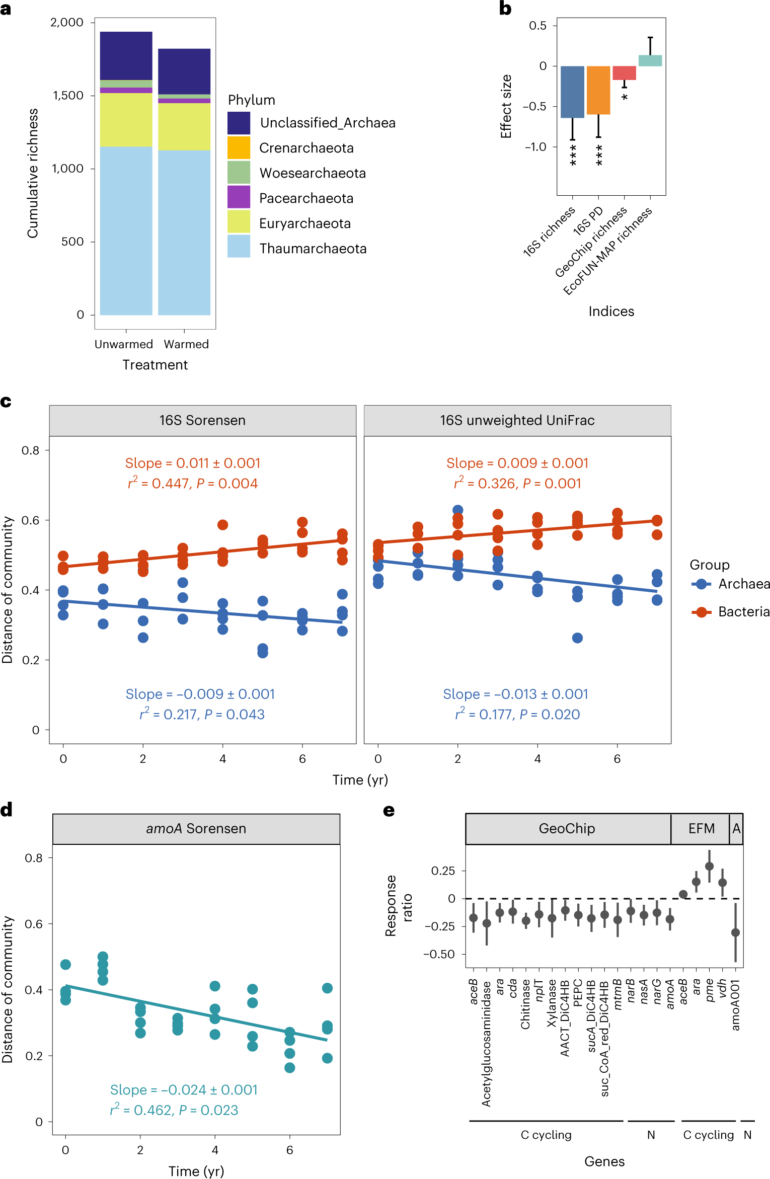Led by Jizhong Zhou, Ph.D., the director of the Institute for Environmental Genomics at the University of Oklahoma, an international research team conducted a long term experiment that found that climate warming reduced the diversity of and significantly altered the community structure of soil archaea. Their findings are published in the journal Nature Climate Change.
At the microbiological level, life can be described as belonging to one of three kingdoms—how species are described in relation to one another. Eukarya contains complex organisms like animals and plants and microorganisms such as fungi. The other two categories, bacteria and archaea, are comprised only of microorganisms.
Archaea are prevalent in a range of environments, from some of the most hostile like volcanoes and permafrost. However, archaea are also common in the human microbiome and as an important part of soil ecology.
“As temperature is a major driver of biological processes, climate warming will impact various ecological communities,” Zhou said.
“Based on long-term time-series data, our previous studies revealed that experimental warming leads to the divergent succession of soil bacterial and fungal communities, accelerates microbial temporal scaling, reduces the biodiversity of soil bacteria, fungi and protists, but increases bacterial network complexity and stability. However, how climate warming affects the temporal succession of the archaeal community remains elusive. Archaea are ubiquitously present in soil and are vital to soil functions, e.g., nitrification and methanogenesis.”
Using a long-term multifactor experimental field site at OU’s Kessler Atmospheric and Ecological Field Station, the researchers showed that experimental warming of a tallgrass prairie ecosystem significantly altered the community structure of soil archaea and reduced their taxonomic and phylogenetic diversity.
In contrast to the researchers’ previous observations in bacteria and fungi, their finds show that climate warming leads to convergent succession of the soil archaeal community, suggesting archaeal community structures would become more predictable in a warmer world.
More information:
Ya Zhang et al, Experimental warming leads to convergent succession of grassland archaeal community, Nature Climate Change (2023). DOI: 10.1038/s41558-023-01664-x
Provided by
University of Oklahoma
Citation:
Archaea in a warming climate become less diverse, more predictable (2023, May 5)



